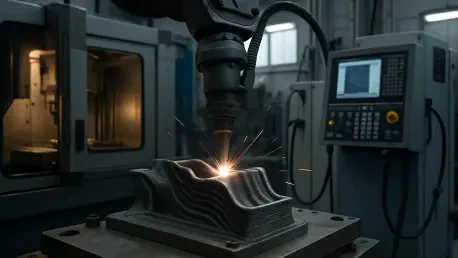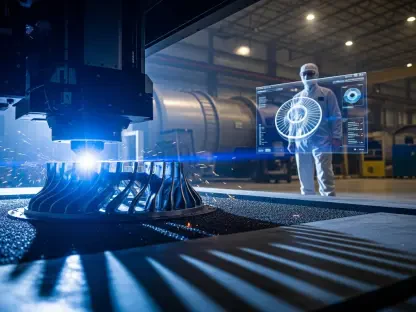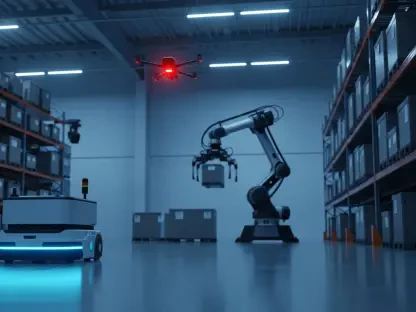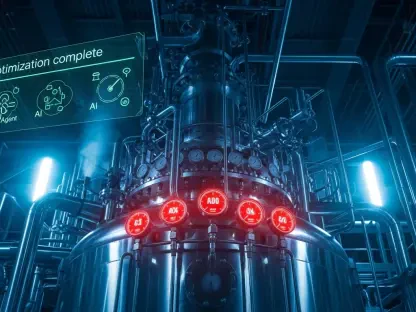Imagine a world where a single 3D printing file format can seamlessly bridge the gap between design and production, eliminating errors and ensuring consistency across diverse technologies and industries. This is no longer a distant dream but a reality with the 3D Manufacturing Format (3MF), a standardized solution that has transformed additive manufacturing (AM). With its official recognition as ISO/IEC 25422:2025, announced earlier this year, 3MF stands as a pivotal advancement, addressing long-standing challenges of interoperability and scalability in 3D printing. This review dives into the core features, real-world impact, and future potential of this groundbreaking format, shedding light on why it has become a cornerstone of modern AM.
Unpacking the Significance of 3MF
The emergence of 3MF marks a significant shift in the AM landscape, moving beyond the limitations of older file formats like STL, which often struggled with data loss and lacked support for advanced features. Developed through the collaborative efforts of the 3MF Consortium, this format provides a robust framework that ensures designs are accurately translated into physical objects, whether on a desktop printer or in an industrial setting. Its standardization under ISO/IEC 25422:2025 reflects a unified industry push toward compatibility and reliability.
This format’s relevance cannot be overstated in an era where AM is expanding into sectors like aerospace, automotive, and healthcare. By offering a comprehensive solution for data transfer, 3MF enables manufacturers to maintain design intent while scaling operations. The focus on secure and repeatable processes positions it as a vital tool for innovation, setting the stage for a deeper exploration of its technical capabilities.
Core Features and Performance of 3MF
Material and Property Precision
One of the standout aspects of 3MF is its ability to define material characteristics with exceptional detail, a feature codified in the ISO standard. This capability ensures that specific properties, such as texture or strength, are consistently applied across various 3D printing platforms. Such precision is critical for industries where material integrity directly impacts product performance, like medical device manufacturing.
Unlike older formats, 3MF supports a nuanced approach to material specifications, allowing for intricate combinations that cater to specialized needs. This flexibility reduces the risk of errors during production, fostering trust in the output. The result is a more predictable workflow, where designers and engineers can rely on the format to deliver intended results without costly adjustments.
Streamlining Production Workflows
The production extensions of 3MF are another key strength, facilitating seamless communication of design and manufacturing parameters. These extensions allow for the secure transfer of critical data, ensuring that production intent is preserved from concept to completion. This is particularly valuable in large-scale industrial applications where efficiency and accuracy are paramount.
By integrating workflow enhancements, 3MF minimizes the need for manual intervention, cutting down on time and potential mistakes. This streamlined approach supports scalability, enabling companies to handle complex projects with multiple stakeholders. Industry leaders have noted that such advancements pave the way for more automated and agile manufacturing environments.
Geometry and Security Innovations
Support for advanced geometry features, such as beam lattice structures and Boolean operations, sets 3MF apart in handling complex designs. These capabilities allow for the creation of intricate models that older formats could not accommodate without significant data loss. Additionally, slice data integration optimizes the printing process by providing precise layer information.
Security is another critical area where 3MF excels, offering mechanisms to protect intellectual property during data sharing. Secure content features ensure that sensitive designs remain safeguarded, addressing a major concern in collaborative projects. This combination of technical sophistication and data protection underscores the format’s role as a modern solution for AM challenges.
Real-World Impact Across Industries
The practical applications of 3MF span a wide range of sectors, demonstrating its versatility and effectiveness. In personal 3D printing, hobbyists and small businesses benefit from its user-friendly structure, which simplifies the transition from design to print. Meanwhile, in high-stakes fields like aerospace, the format ensures precision in producing lightweight, durable components.
Testimonials from industry giants highlight its transformative effect. Alexander Oster from Autodesk has praised the format for enhancing data pipelines, benefiting millions of users worldwide. Similarly, Arvind Rangarajan from HP emphasized its role in securely transferring production parameters, crediting collaborative efforts for driving adoption in industrial settings.
Beyond individual use cases, 3MF fosters consistency across global supply chains, a crucial factor for multinational corporations. Its ability to standardize processes reduces discrepancies between different hardware and software ecosystems. This widespread applicability signals a shift toward a more unified approach in additive manufacturing practices.
Challenges in Widespread Adoption
Despite its advantages, integrating 3MF into existing systems poses technical hurdles for some organizations. Compatibility issues with legacy software and hardware can slow down the transition, particularly for companies heavily invested in older formats. This resistance highlights the need for robust support and education initiatives.
Another barrier lies in the learning curve associated with adopting a new standard, as teams must adapt to updated workflows. The 3MF Consortium continues to address these challenges by refining the format and offering resources to ease implementation. Overcoming these obstacles remains essential for achieving broader industry acceptance.
Efforts to expand compatibility and simplify integration are underway, with updates expected to address current limitations over the next few years, from 2025 to 2027. These developments aim to bridge gaps between traditional systems and modern requirements. Persistent collaboration among consortium members will be key to navigating this evolving landscape.
Looking Ahead: The Future of 3MF
The trajectory of 3MF suggests a future where it becomes the backbone of additive manufacturing innovation. Potential enhancements include expanded support for emerging printing technologies and more intuitive tools for designers. Such advancements could further democratize access to high-quality 3D printing capabilities.
Broader industry adoption is anticipated as awareness grows and integration challenges are resolved. This could lead to a tipping point where 3MF becomes the default standard, unifying disparate systems under a single framework. The long-term impact may reshape how products are designed and manufactured on a global scale.
Exploration of new extensions and partnerships will likely drive the format’s evolution, aligning with trends toward automation and digital transformation. As AM continues to mature, 3MF’s role in fostering scalability and creativity stands to redefine manufacturing paradigms. Keeping pace with these shifts will be crucial for stakeholders across the ecosystem.
Final Thoughts on a Transformative Standard
Reflecting on this evaluation, the journey of 3MF as a standardized format under ISO/IEC 25422:2025 proves to be a landmark achievement for additive manufacturing. Its robust features and real-world impact demonstrate a clear leap forward in addressing historical interoperability issues. The collaborative spirit of the 3MF Consortium plays a pivotal role in shaping this success.
Moving forward, stakeholders should prioritize investing in training programs to facilitate smoother transitions to this format. Exploring strategic partnerships to enhance compatibility with existing systems emerges as a critical next step. These actions promise to unlock the full potential of 3MF in diverse applications.
Lastly, continuous feedback from users and manufacturers should guide future iterations, ensuring that the format adapts to emerging needs. By focusing on these actionable measures, the AM industry can build on the foundation laid by 3MF, driving innovation and efficiency for years to come.









